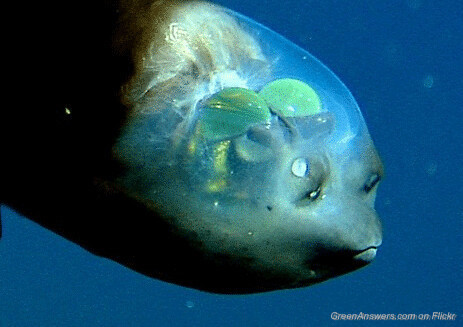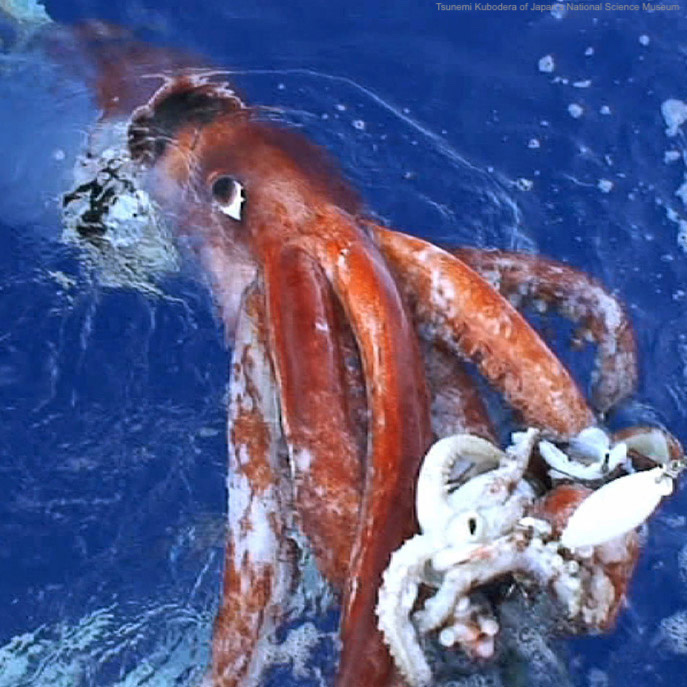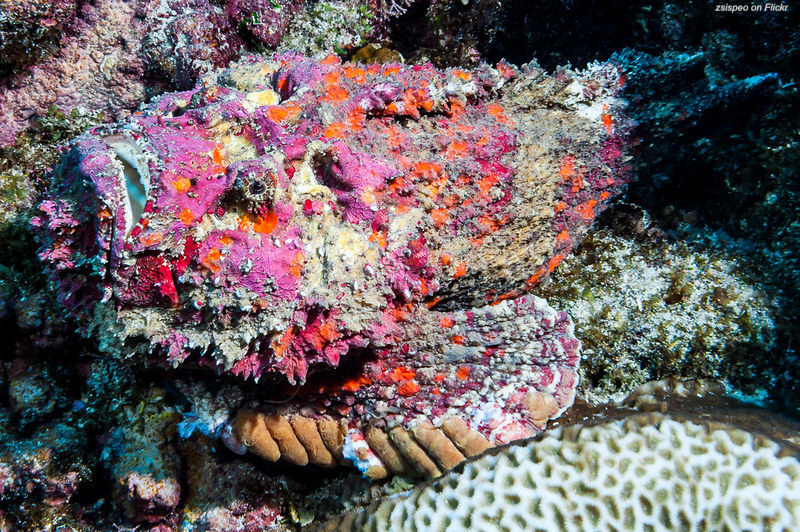It’s that time of year again, when werewolves, goblins, and vampires skulk in the shadows. This Halloween, we present some of the spookiest marine creatures lurking in the OGL collection!

Barreleye (Macropinna microstoma)
The barreleye must have a lot of role models, because it looks up to everyone! And yes, those green orbs are actually this fish’s eyes! These extremely sensitive eyes look directly up from 2,000 feet beneath the waves, as the barreleye hovers motionless in the dark…waiting for the bioluminescent glow of passing prey before they strike!

Giant squid (Architeuthis dux)
The giant squid’s name is no exaggeration: It can reach 43 feet in length! But as large as this squid is, it remains very elusive and is rarely seen by humans. Deep down in the dark ocean, the giant squid uses its foot-wide eyes to help spy and ambush its prey. But this real-life Kraken is mainly found between 1,650 and 3,300 feet, too deep to disturb any passing boats.

Reef stonefish (Synanceia verrucosa)
Disguised as a lump of coral, the reef stonefish waits for its prey to pass by unaware before striking in the blink of an eye! Their ambushes are so fast that they can only be recorded with high speed cameras! However, small fish aren’t the only ones who should be afraid. The reef stonefish is the most venomous fish in the world, with thirteen sharp spines in its dorsal fin that can cause intense pain or even death in humans.
As spooky as these marine creatures are, humans can be a lot scarier. Our impacts on the oceans through ocean acidification, overfishing, and pollution have driven many fascinating creatures like these to the brink of extinction. This is why OGL’s mission is so important—the genetic information we preserve helps scientists to protect these rare and at-risk species.
Want to learn more about how you can help OGL preserve our ocean’s biodiversity? Support OGL’s research here!
